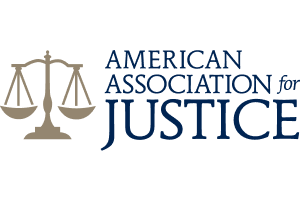Electrical Shock Injury and Death
While the public has become accustom to overhead power lines crossing streets, playground, parks, and private land, we often fail to stop to consider the danger that is present hanging just over our heads. We rely on the power companies to protect us from harm and follow best safety practices. Transmission and distribution power lines carry enough electrical energy to kill or seriously injury anyone that comes into contact with energized lines. Contact may occur for a variety of reasons, including power lines that fall in wind storms, power lines that electrify nearby trees, buildings, or fences due to close proximity, workers that encounter power lines close to their work site, trucks or booms that make contact with power lines, power lines that hang too low and make contact with vehicles attempting to pass under the power lines, motor vehicle collisions with power poles that are close to the roadway, and many other contexts. If you are injured or a loved one is killed due to an energized power line, it is important that you consult with an experienced personal injury attorney to determine whether you have a claim for compensation. You deserve answers and only a careful investigation will determine the truth about what caused the electrical accident.
Power Companies Have a High Duty to Protect the Public to Prevent Injuries
In Washington, a power company must exercise “the utmost care and prudence consistent with the practical operation of its plant, to prevent such injury.” Keegan v. Grant Public Utility District No. 2, 34 Wn. App. 274, 278 661 P.2d 146 (1983); see also Scott v. Pac. Power & Light Co., 178 Wash. 647, 650, 35 P.2d 749 (1934). The purpose behind this higher duty is to impose on the power companies with superior knowledge of the dangers and hazards of power line operation, the obligation to follow accepted industry standards for the operation of power lines for the protection of the general public. These industry standards include adherence to the National Electric Safety Code and state regulation of the electric power industry. For example, the National Electric Safety Code has standards for the minimum distance from overhead power lines to the ground and nearby buildings. It also has standards that require fault protection and grounding of electrical equipment. When a power company fails to follow accepted industry standards for the operation of power lines and needlessly endangers the public, they should be held accountable for the harm they cause and the lives that are changed forever.
Power Lines are Designed to De-Energize When a Fault Occurs
Power lines are designed to de-energize when the power is interrupted for some reason. Usually, this will occur in a matter of seconds or fractions of a second. This is a vitally important safety mechanism to prevent injuries and deaths to the public who may unknowingly make contact with an energized power line or get close enough to be energized by the line. When the power line does not de-energize after it falls to the ground or on another structure, it may be due to improper design of the fault protection system or some defect in the construction of the fault protection system. A careful investigation should take place to determine the reason why the line did not de-energize and determine if the power failed to follow important safety standards that put the public at risk.
Electrical Burn Injuries From Power Lines
When a person makes contact with an electrical power line, the energy from the power line will find the quickest path to ground. The heat generated from the energy passing through the body usually causes very severe electrical burns, destroys tissue, and can even cause total loss of limbs, organs, and other body tissue. Physicians treating electrical burn injuries must consider potential cardiac problems, compartment syndrome, wound care, brain injury, pain management, and potential long-term complications like renal, septic, cardiac, neurologic, and eye problems. In the Northwest, many burn patients are immediate transferred to Harborview Medical Center in Seattle, Washington for acute treatment and management of their injuries. Harborview Medical Center is one of the best trauma and burn care centers in the United States and offers patients suffering from electrical burns the best care possible.
Free Case Evaluation
With over 65 years of combined personal injury law experience, our lawyers offer a free case evaluation for patients with electrical burn injuries or family members dealing with the loss of a loved one following an electrocution from energized power lines. We accept cases on contingent fee, which means that you don’t pay an attorneys’ fee unless we are successful in making a recovery for you. Contact us today for a free evaluation of your claim at 206.624.8844.







